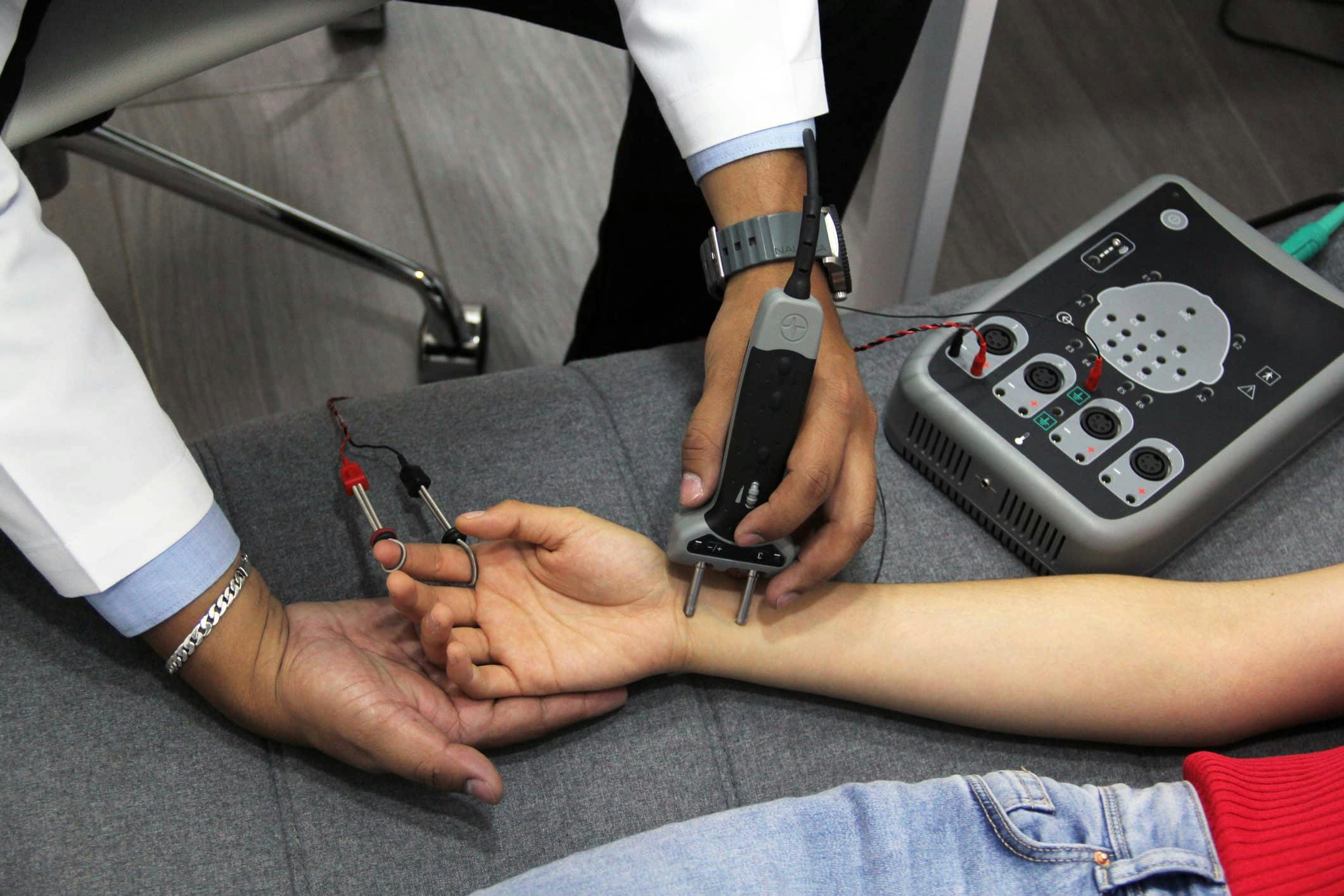What is an EMG?
The EMG studies the condition of the nerve roots leaving the spine and running to the extremities. EMG works by examining the electrical activity in the muscles which these nerve roots control. For example, if you are feeling lower back pain, your leg muscles may be tested to see if there is a problem with the nerves that travel to your legs. During an EMG, tiny electrode needles are inserted into the muscles being tested. The electrical activity of the muscles is examined during both rest and contraction, and the electrical activity in the muscle is amplified, displayed and recorded for analysis. If the muscle is not functioning normally, it may mean that a nerve is being irritated or pinched—a possible sign of a herniated disc or spinal stenosis. The test takes anywhere from 30 minutes to an hour, depending on the number of muscles being tested. The EMG is safe, but the needles may cause some bruising.



